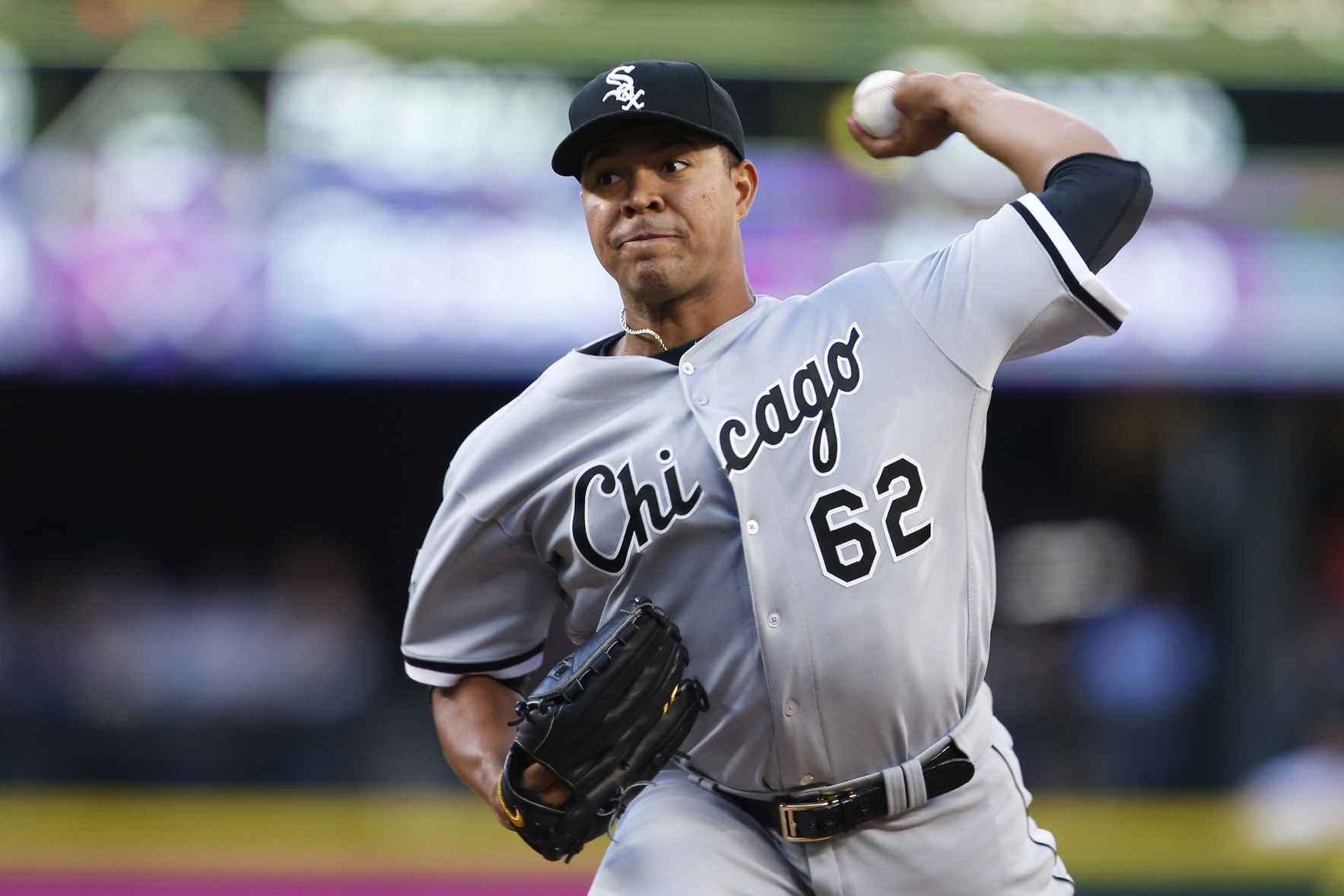1. This year has been marketed as Jose Quintana’s breakout season by many, including myself and others on this blog. It is and isn’t.
His 3.13 ERA would be a career-low if he held onto it through the end of the season, the dearth of elite AL pitching has pushed him to the head of advanced metric leaderboards and into the spotlight in a way that he’s never enjoyed previously in his career, and after a couple injury replacements and 800 relievers were added, he made his first All-Star Game.
But the great leap forward in Quintana’s game, or the second great leap forward, or really the third…er, the most recent great leap forward came in 2014. That’s the point where his curve became what it is today, his approach diversified, his whiff rates on every pitch in his collection stabilized and he started posting strikeout rates over 20 percent. If anything, he’ll be hard-pressed to match the 2.58 DRA he posted in 2014, as anyone would be.
Perhaps it’s not the best time to reflect on his consistency, his health, or the smooth athleticism of his delivery, in the wake of a night in Seattle where he looked like the archetypal top-line starter, then lost his command in the fourth, hung a beachball of a curve to Robinson Cano, and just kind of grappled his way through six innings, or maybe it is.
2. Jose Abreu was Jose Abreu for the first two years of his major league career, and an internationally renown offensive monster before that, so extending him four months of credibility while he hangs around league average production is earned. But it is genuinely mystifying to watch him scuffle.
The wisdom of Abreu’s approach was always assumed on the basis of results. Hawk Harrelson made note of his extremely high chase rate, but he’s not any more aggressive, or even more prone to swings-and-misses than he was in 2014. It’s just that now that he can’t pull anything in his hitting zone for power, and that he’s fouling off pitches more than ever, all the mistakes on changeups and breaking balls on the outer half that he was willing to cede for the fruits of his aggression look foolish now. All of sudden, he needs more pitches to drive before he can take advantage.
It could be a slump, a funk, a fog, nagging injury, but this at least looks like decline, and maybe his approach needs to adjust to the skill set.
3. Paul Konerko tried to provide some optimism on Abreu’s struggles with the sort of so-fatalistic-it’s-optimistic reasoning that I didn’t realize we were desperately missing until now.
“He’s still a really good hitter, and you can go ask the other team that. When he’s in the on-deck circle or he’s up to bat, he’s probably still the guy they talk about in their room about not letting him beat them. He’s still pretty good. Water seeks its level. It wouldn’t surprise me if he rattles off a month with 10, 12 homers and gets right back up where he normally is.”
‘Water seeks its own level’ is a pretty grim reasoning to take to heart during what looks to be the eighth year of a playoff drought, or remembering Konerko as the guy touting a near-.400 average near the end of May 2012, reminding us all that his hot streak wouldn’t last, before immediately entering a steep decline while the Sox slowly spoiled the fruits of a hot start in a weak AL Central.
Maybe I didn’t miss Konerko’s philosophy after all.
4. Carlos Rodon is progressing, but sounds destined to miss another start.
Rodon played catch today and says he feels much better.
Next step in recovery is to lengthen out; will throw from 90 feet in a few days.
— Chicago White Sox (@whitesox) July 19, 2016
Anthony Ranaudo has not set the world on fire in Triple-A, but he has been an order of magnitude better than Jacob Turner, who was mostly helpless against a major league lineup on Sunday. Nevertheless, Ranaudo threw seven innings (decent ones, too) on Tuesday and doesn’t figure to be available when the Sox need another spot on Friday. Unless they have an alternate plan or Turner knows secret codes for diffusing Detroit bats, this is confusing.
5. Alex Avila is now two games into his second rehab stint with the Charlotte Knights (he’s already taken a walk) and his return cannot come soon enough. He hit .214/.333/.250 before his first injury, and .242/.371/.389 afterward, so by the assumption that hamstring injuries are boosting his offense, he should flirt with a .900 OPS upon his return.
In seriousness, Avila is not what he once was, and it’s inadvisable to try to use anecdotal observations off television to make any kind of meaningful conclusion about what kind of framing is going on. But knowing that Dioner Navarro has a bottom-10 rate in Major League Baseball, watching his sloppy actions behind the plate on close pitches that go for balls, and knowing that Avila’s absence just pushes him into full-time work, when he’s hitting .209/.264/.336 against right-handers, is more than a little grating.
Lead Image Credit: Joe Nicholson // USA Today Sports Images
